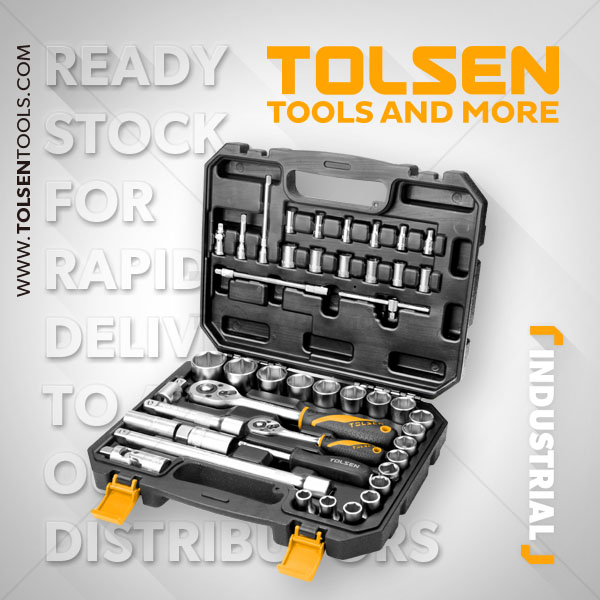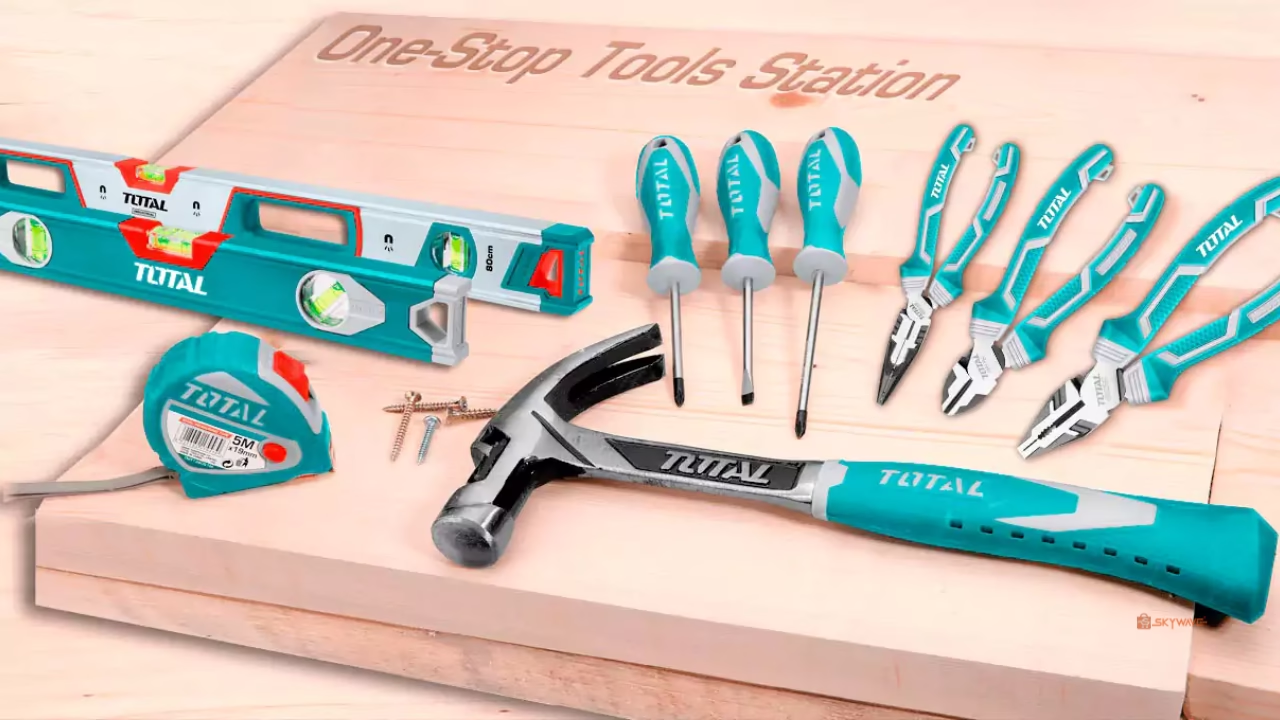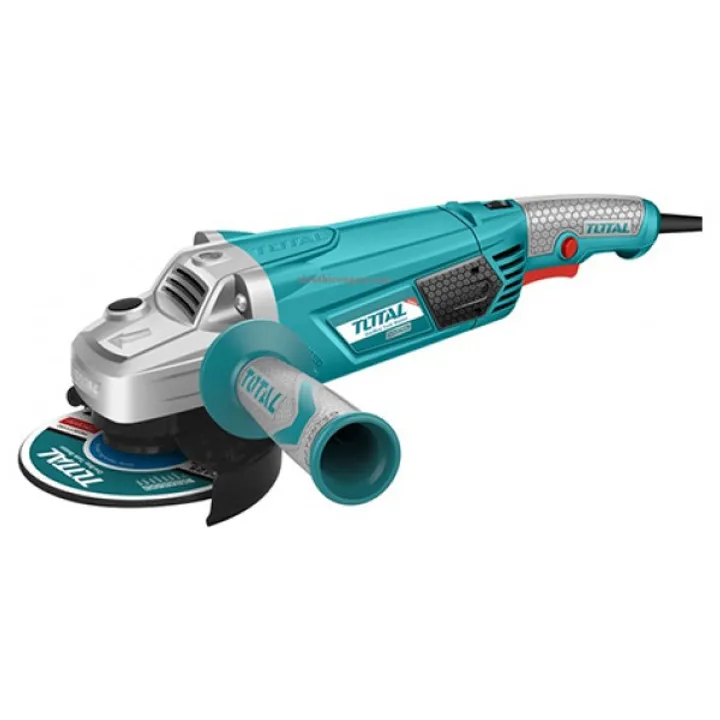Tool Kit Sets in Kenya: The Ultimate Guide

Introduction
Whether you’re a seasoned handyman or a budding DIY enthusiast, having the right tool kit set is essential. In Kenya, the market for tool kits is growing, offering a variety of options to suit different needs and budgets. Let’s explore more about tool Kits, the benefits you get when having one, some of the most popular tool kits available in Kenya, and some of the factors you should look for when buying a tool kit set.
What is a Tool Kit and Its Uses
A tool kit, often called a toolbox set, is an organized collection of various tools housed within a portable container or case. These tools are designed to cater to a wide range of applications, from simple repairs and maintenance tasks to complex DIY projects. The components of a tool kit set can vary but typically include essential items such as screwdrivers, pliers, wrenches, hammers, and measuring instruments. The selection and variety of tools within a tool kit are tailored to meet the needs of both professional tradespeople and home enthusiasts alike.
In professional settings like construction sites and workshops, a complete tool kit is essential for tradespeople. It provides quick access to needed tools, improving efficiency and productivity. Different trades rely on specific tools within their kits for tasks like structure assembly or electrical system work. Portability allows easy transport between job sites.
In domestic environments tool kits are essential, providing convenience, saving time, and offering cost-effective solutions. They help homeowners tackle common tasks like fixing leaks, assembling furniture, and hanging pictures, reducing the reliance on professional help.
The versatility and convenience provided by a tool kit set make it an essential item for anyone involved in hands-on work. Whether for professional use or personal projects, having a well-equipped tool kit ensures that you are prepared to tackle a wide array of tasks efficiently and effectively. The investment in a quality tool kit set translates to a reliable and long-lasting resource that supports various repair, maintenance, and improvement endeavors.
Benefits of Owning a Tool Kit Set
Owning a tool kit set offers a multitude of benefits, making it an essential asset for both professionals and homeowners.
- For professionals, a comprehensive toolbox set ensures that all necessary tools are readily available, significantly enhancing productivity and efficiency. Having a complete set of tools at one’s disposal means that tasks can be completed without unnecessary delays, reducing downtime and increasing overall job performance.
- For homeowners, a well-organized tool kit can be a lifesaver when it comes to minor repairs or DIY projects around the house. Instead of calling a professional for every small issue, having the right tools on hand can save both time and money. A tool kit set allows homeowners to tackle a variety of tasks, from fixing a leaky faucet to assembling furniture, providing a sense of independence and self-reliance.
- The organization that comes with a toolbox set helps prevent the loss of tools. Each tool has its designated spot, ensuring that it is readily available when needed. This level of organization not only saves time spent searching for misplaced tools but also extends the lifespan of the tools by reducing the likelihood of them being damaged or lost.
- The portability of a tool kit is another significant advantage. A well-designed tool kit set is easy to transport, making it versatile for various tasks in different locations. Whether you need to take your tools to a remote job site or simply move them between rooms in your home, the convenience of a portable tool kit cannot be overstated. This mobility ensures that you are always prepared, no matter where the task takes you.
Common Tools Found in Various Types of Tool Kits Set
Tool kits can vary greatly in size and content, ranging from compact sets with a handful of essential tools to expansive collections boasting hundreds of pieces. The most commonly found tools in these kits include screwdrivers, wrenches, pliers, hammers, and tape measures. Each tool is designed to perform a specific task, making a well-rounded tool kit set an invaluable asset for both professionals and DIY enthusiasts.
- Screwdrivers – These are indispensable for driving screws into surfaces. They come in various types, including flathead and Phillips, each suited for different screw heads.
- Wrenches – These are essential for tightening or loosening nuts and bolts. They are available in multiple formats, such as adjustable wrenches, socket wrenches, and combination wrenches, each serving a unique function.
- Pliers – They are another vital component of any toolbox set. They are used for gripping, bending, and cutting wires or other materials. There are several types, including needle-nose pliers, slip-joint pliers, and cutting pliers, each designed for specific tasks. Hammers, typically found in almost every tool kit set, are primarily used for driving nails into surfaces. They come in various forms, such as claw hammers for general use and ball-peen hammers for metalworking.
- Tape measures – They are crucial for obtaining accurate measurements, whether for construction projects or simple home repairs. They range from basic models to more advanced digital versions, catering to different needs and precision levels.
Tool kits come in various sizes, tailored to different requirements. For instance, a 9-piece set might contain just the essentials for minor repairs, while a 26-piece set would offer a more comprehensive range of tools for varied tasks. Larger sets, such as 100-piece or even 216-piece collections, provide extensive options for more specialized projects.
At Skywave, we recognize the importance of customization and thus offer toolboxes separately, enabling customers to tailor their tool sets according to their specific needs. This flexibility ensures that everyone from hobbyists to professionals can find the perfect tool kit set to meet their requirements.
Choosing the Right Tool Kit Set: Factors to Consider
When selecting the right tool kit set, it is crucial to consider several factors to ensure that the set meets your specific needs. These factors include:
1. Intended use
The primary consideration should be the intended use of the toolbox set. Determine whether you require the kit for professional tasks, which may demand specialized and high-quality tools, or for general home use, where a versatile and comprehensive set might suffice. The nature of the tasks you plan to undertake will significantly influence your choice.
2. Number of pieces
Another essential factor is the number of pieces included in the tool kit set. Larger sets generally offer a broader range of tools, providing greater versatility for various tasks. However, these can be cumbersome to store and transport. Smaller sets, while more limited in scope, offer the convenience of portability and easier storage. Assess your typical projects to decide whether a large comprehensive set or a compact, essential one is more suitable for you.
3. Quality
Quality is a critical aspect that should not be overlooked. High-quality tools, such as those from reputable brands like Total, ensure durability and reliability, reducing the risk of breakage and the need for frequent replacements. Investing in a high-quality tool kit can be cost-effective in the long run, as it guarantees that the tools will withstand rigorous use.
4. Organization
Consideration should also be given to the organization and storage of the tool kit set. A well-organized toolbox with a sturdy, well-designed case can make a significant difference in maintaining the tools and ensuring easy access when needed. Look for kits that offer a logical arrangement of tools and secure storage solutions to keep your tools in good condition.
5. Budget
Finally, budget constraints are an important consideration. Striking a balance between cost and quality is essential. While it might be tempting to opt for cheaper options, investing in a more expensive, high-quality set can offer better value over time. Evaluate your budget and prioritize the factors that are most important for your specific requirements to make an informed decision.
Conclusion
Choosing the right tool kit involves a careful evaluation of your needs, a focus on quality and durability, and consideration of portability and storage solutions. By taking these factors into account, you can find a tool kit that will serve you well for years to come. Happy tool hunting on Skywave!





